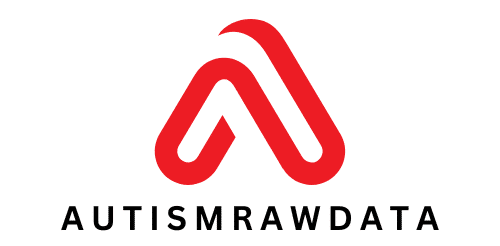Whether you’re a competitive shot putter or simply an enthusiast looking to improve your game, your training program is crucial in helping you gain strength, power, and ultimately, distance in your throws. Implementing a progressive overload weight training routine can be an effective way to enhance your overall performance in the field. This regimen involves gradually increasing the amount of stress placed upon the body during exercises, thus promoting muscle and strength growth.
In this practical guide, we will take you through how to structure a progressive overload weight training routine tailored for shot putters. We will walk you through the fundamental principles of training, the best exercises to incorporate, how to manage your rest days, and how you can optimize your workouts to reach your peak performance.
Avez-vous vu cela : Can Neuromuscular Electrical Stimulation Speed Up Recovery in Post-ACL Surgery Athletes?
Understanding the Principles of Training
Before we delve into the specifics of the routine, it’s essential to understand the underlying principles of training. These principles guide you in crafting the appropriate sets and reps, determining the right weight, and knowing how to adjust your workout regimen over time.
Progressive Overload is the key principle behind any effective weight training program. It’s the practice of gradually increasing the amount of stress placed on your body during exercise. This can be achieved through increasing the weight, changing the number of reps or sets, or altering the exercise form. By continually challenging your body, you stimulate muscle growth and strength development.
Sujet a lire : How to Develop a Comprehensive Injury Prevention Program for Youth Rugby Teams?
Your Training Frequency, referring to the number of workouts you do in a week, also plays a significant role. For shot putters, training 3-4 times per week can be optimal. It’s important to balance your training days with rest days to allow your muscles to recover and grow.
Lastly, consider your Training Volume and Intensity. The volume is the total amount of work you do, often measured in sets, reps, and weight. The intensity refers to how hard you push yourself in each workout. Balancing these two aspects is critical to prevent overtraining and injury.
Choosing the Right Exercises
The choice of exercises in your workout program should mimic the movements used in shot putting. These exercises should target the upper body, including the shoulders, chest, and arms, as well as the core and lower body.
The Overhead Press is a great exercise for shot putters. It targets the shoulders and triceps, two vital muscles used in the throwing motion. You can perform this exercise using dumbbells or a barbell. Aim for 3-4 sets of 8-12 reps.
Squats and Deadlifts are ideal for strengthening the lower body and core. These exercises will increase your power and stability, which are essential for a powerful throw. Perform 3-4 sets of 5-8 reps for these exercises.
Bench Press is another effective exercise for shot putters. It works on the chest and triceps, promoting upper body strength. Try to incorporate 3-4 sets of 8-12 reps in your workout.
Scheduling Rest Days
Rest days are as important as training days in your routine. They give your body the time it needs to repair and build muscles. Without adequate rest, your performance may decline, and the risk of injury increases.
Ideally, you should take at least one day off between workout days. You can also consider scheduling a full week of rest every 8-12 weeks to allow your body to fully recover. During your rest days, you can engage in light activities like stretching, yoga, or low-intensity cardio to maintain your fitness level without placing undue stress on your body.
Optimizing Your Workouts
To make the most out of your workouts, you need to keep challenging yourself. This means increasing the weight you’re lifting, the number of reps or sets, or the difficulty of the exercises. It’s also essential to monitor your progress to determine when it’s time to incrementally increase the challenge.
Another way to optimize your workouts is by focusing on the form of your exercises. This will ensure that you are targeting the right muscles and not straining other parts of your body.
Finally, remember that your diet and hydration play a vital role in your training. A balanced diet rich in protein will support muscle growth, and staying hydrated will keep you performing at your best during your workouts.
Creating Your Program
Now that you understand the principles of training, it’s time to put them into action and create your own progressive overload weight training program. Start by determining your initial weights for each exercise, keeping in mind that you should be able to perform the prescribed sets and reps with good form.
Plan your training days and rest days for the week, balancing the load between upper and lower body workouts. Vary the exercises, sets, and reps to avoid hitting a plateau and to ensure that all muscle groups are adequately worked.
As you progress, remember to keep challenging yourself by increasing the weight, reps, or sets. Monitor your progress closely, making necessary adjustments to your program to ensure continuous improvement.
In sum, a well-structured progressive overload weight training routine can significantly improve your shot putting performance. By understanding the principles of training, choosing the right exercises, scheduling rest days, and optimizing your workouts, you’ll be on your way to reaching your peak performance.
Integrating a Push/Pull/Legs Split
To further optimize your training program, consider integrating a Push/Pull/Legs split. This type of routine divides exercises into three categories:
- Push exercises: These primarily work the muscles used for pushing, such as the chest, shoulders, and triceps. The bench press is an excellent example of a push exercise.
- Pull exercises: These target the muscles used for pulling, like the back and biceps. Deadlifts and rows fall into this category.
- Legs exercises: These, unsurprisingly, focus on the lower body. Squats and lunges are primary examples.
A push/pull/legs split allows you to train different muscle groups on different days, ensuring each muscle group gets adequate rest before being worked again. This can help stimulate muscle growth and prevent overtraining. Additionally, it allows you to focus more intently on each muscle group during its designated workout, which can improve strength and power.
For shot putters, a typical week might look like this:
- Day 1: Push exercises
- Day 2: Rest
- Day 3: Pull exercises
- Day 4: Rest
- Day 5: Legs exercises
- Day 6: Rest
- Day 7: Rest or light cardio/stretching
Remember, the key is to maintain a balance. Don’t neglect any muscle group or prioritize one over the others. Each one plays a crucial role in shot putting.
Dialing in Rep Range and Weight Load
The amount of weight you lift and the number of reps and sets you perform can have a significant impact on your results. As a shot putter, your aim should be to increase both strength and power.
In general, lower reps (1-5) with heavier weights are best for building strength. This rep range stimulates your neural system to improve your strength capacity.
On the other hand, performing a moderate number of reps (6-12) with a moderately heavy weight promotes hypertrophy or muscle growth. This rep range is ideal if your goal is to increase muscle size.
As a shot putter, combining both low-rep, high-weight sets, and moderate-rep, moderate-weight sets in your workout can be beneficial. This can help you increase both your power and the size of your muscles, leading to improved shot putting performance.
A sample workout might include:
- Overhead Press: 5 sets of 5 reps with a heavy weight
- Squats: 4 sets of 10 reps with a moderate weight
- Bench Press: 3 sets of 8 reps with a moderate weight
Remember, the key principle here is progressive overload. As you get stronger, continue to increase the weight load or the number of reps and sets you perform to challenge your body and stimulate further muscle growth.
Conclusion
Shot putting demands a unique combination of strength, power, and technique, and following a well-structured progressive overload weight training program can help you improve in all these areas. By understanding the principles of training and implementing the right exercises, sets, reps, and rest days, you can effectively stimulate muscle growth and strength development.
Incorporating a push/pull/legs split and varying your rep range and weight load can further enhance your performance. Remember to keep challenging yourself, maintain proper form, and support your training with a balanced diet and adequate hydration.
Ultimately, success in shot putting isn’t just about how much you lift, but how well you can apply the strength and power you gain from your workouts to your throws. Stay consistent, stay focused, and keep pushing your limits. Your hard work will surely pay off in increased distance in your throws and improved overall performance.






